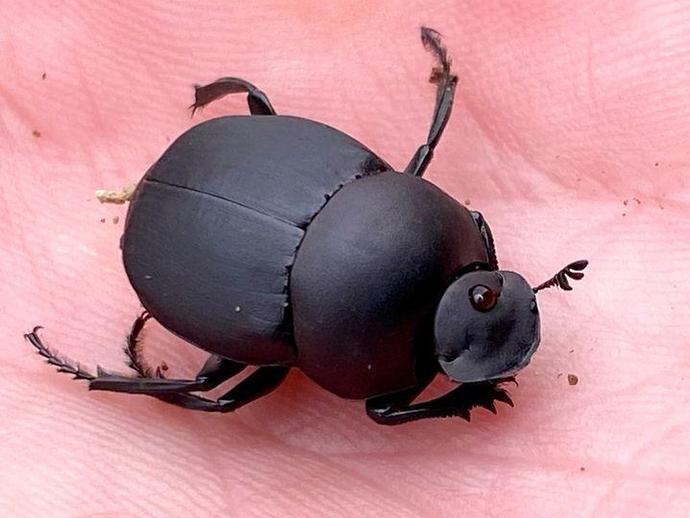June 17, 2021
It's time for today's edition of #BenInNature presented by our friends at Carter Bank & Trust!
I had always thought of dung beetles as critters unique to Africa, rolling animal droppings into perfect little balls and pushing them across the savanna. However, we have a number of dung beetles right here in Virginia, including this little guy: Canthon chalcites, also known as one of the "tumblebugs!"
Dung beetles feed on droppings and many species also use them for breeding chambers. There are three basic kinds of dung beetles: tunnelers, which bury animal droppings when they come across them; dwellers, which just live in droppings; and rollers, which roll droppings into round balls. Canthon chalcites is a roller!
Dung beetles may seem gross, but they provide a very valuable service. Not only do they help dispose of animal droppings, but they also help disperse any seeds that might be present in the droppings. They also help recycle nutrients back into the soil!
This isn't the first species of dung beetle I've found since I started doing these nature posts. Last summer I spotted Dichotomius carolinus, which is our largest and heaviest dung beetle in the eastern U.S. and is one of the tunnelers. Since I don't keep a large amount of animal dung around my house, I'm guessing they're visitors from my neighbor's cattle pasture!
Thank you to entomologist extraordinaire Dr. Art Evans for helping narrow this beetle down to species!
ABOUT #BenInNature
Social distancing can be difficult, but it presents a great opportunity to become reacquainted with nature. In this series of posts, Administrator of Science Ben Williams ventures outdoors to record a snapshot of the unique sights that can be found in the natural world. New updates are posted Monday - Friday, with previous posts highlighted on the weekends. This series of posts is made possible thanks to the support of VMNH Corporate Partner Carter Bank & Trust (www.cbtcares.com).
NATURE PHOTO IDENTIFICATIONS
If you discover something in nature that you would like help identifying, be sure to message us right here on Facebook with a picture (please include location and date of picture) and we'll have our experts help you identify it!

 Hours & Admissions
Hours & Admissions Directions
Directions

